Homepage / News Details
Comparison of residual chlorine detection methods in water
- Categroy:News
- Author:
- Origin:
- Release Time:2021-11-11 16:25
- Views:
【Summary】1. Materials and methods 1.1 Reagents: o-toluidine solution (Toluidine J), standard colorimetric solution of residual chlorine, standard solution of sodium sulphide sulfate of 0.00564 mol/L, potassium iodide solution of 5, acetic acid buffer of PH-4, 0.5% starch solution, standard solution of iodine of 0.0282 mol/L....
Comparison of residual chlorine detection methods in water
【Summary】1. Materials and methods
1.1 Reagents: o-toluidine solution (Toluidine J), standard colorimetric solution of residual chlorine, standard solution of sodium sulphide sulfate of 0.00564 mol/L, potassium iodide solution of 5, acetic acid buffer of PH-4, 0.5% starch solution, standard solution of iodine of 0.0282 mol/L....
- Categroy:News
- Author:
- Origin:
- Release Time:2021-11-11 16:25
- Views:
1. Materials and methods
1.1 Reagents: o-toluidine solution (Toluidine J), standard colorimetric solution of residual chlorine, standard solution of sodium sulphide sulfate of 0.00564 mol/L, potassium iodide solution of 5, acetic acid buffer of PH-4, 0.5% starch solution, standard solution of iodine of 0.0282 mol/L.
1.2 methods
(1) Colorimetry:
① The sample temperature should be 15°C--20°C, if lower than this temperature, the sample should be immersed in warm water to make the temperature rise to 15°C--20°C, and then determine the value.
② Add 2 -- 3 drops of o-toluidine solution into a colorimetric tube containing 5m samples, and mix well.
③ Put the sample in the dark, stand for 15 minutes, compare with the residual chlorine standard color solution determination, the result is the total residual chlorine content of the sample (this color, eyes from the mouth of the tube or from the front to observe).
④ If the concentration of residual chlorine is very high, it will produce orange color; When the sample alkalinity is too high and the residual chlorine concentration is very low, light blue-green or light blue may be produced. At this point, can add on Iml (1 + 2) or | | m adjacent al toluidine hydrochloride solution, can produce normal light yellow, measured again.
(2) Iodine titration method (iodine standard solution reverse titration method):
① When the residual chlorine in the sewage water sample is less than 10 mg/L, take 200ml sewage sample; If there is more chlorine, the volume of water sample should be reduced proportionally.
② Add 200ml sewage sample into 500 mL conical flask, add 5 -- 20ml 0.00564mol/L sodium sulphide standard solution, Iml 5 potassium iodide solution and 1 mI acetic acid buffer, add 1 mL starch solution to keep pH between 3.5 -- 4.2. Titrate with 0.0282 mol/L iodine standard solution and drop to just light blue as the end point (blue should not disappear after mixing). Subtract the volume of 1 drop iodine solution (approx. 0.05 m1) from the reading. 1 200 m | sewage sample consumption ml0.00564 N sodium sulfide solution, the equivalent of Img/L residual chlorine, so the residual chlorine in 5 mg/L, need 5 ml reagent; When the residual chlorine is 10mg/L, 10 mL reagent should be added. When the residual chlorine in the sewage is higher, the reagent is added proportionally. The residual chlorine measured by iodine titration method is the total residual chlorine, which can be calculated as follows:
CI2 (mg/L) = [(A - 5 b) x 200] / c
Where: Cl2 - total residual chlorine (mg/L);
Ml of standard solution of sodium sulphide sulfate a-0.00564 mol/L;
Ml of b-0.0282 mol/L iodine standard solution;
Iodimetry titration is more accurate, the analysis steps are more complicated;
Colorimetric method can be used for rough determination of residual chlorine content in water plant. Both methods have their uses.
Releate News

Time of issue : 2024-04-22 08:56:03

Time of issue : 2024-04-15 16:52:27

Time of issue : 2024-04-09 10:13:04
CONTACT US
PRODUCTS
CALCIUM HYPOCHLORITE
TCCA
SDIC
BCDMH
FEEDBACK
© 1999-2018 北京网站建设有限公司 Copyright © 2012-2022 All Rights Reserved Powered by www.300.cn 冀ICP备12012949号 津公网安备 12010302002173号 Seo tag

